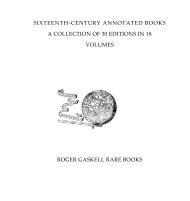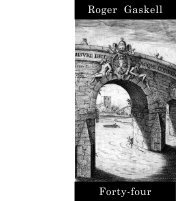pdf - Roger Gaskell Rare Books
pdf - Roger Gaskell Rare Books
pdf - Roger Gaskell Rare Books
Create successful ePaper yourself
Turn your PDF publications into a flip-book with our unique Google optimized e-Paper software.
Provenance: Steeven’s Hospital Medical and Surgical Library with<br />
large oval library stamps dated 1813 on titles, several other text pages<br />
and plate versos.<br />
First editions, Wrst issues. Later issues of vols I and II have the prelims<br />
reset with the same imprint as vol. IV. Mémoires: Garrison–Morton<br />
2160; Wellcome III, p. 451; Norman Library 1280; Recueil: Norman<br />
Library 1281.<br />
The most important work on military surgery after Paré. Larrey recounts<br />
his service in North America as chief surgeon on the frigate Vigilante, and in<br />
Napoleon’s army. These are the four volumes of the original Mémoires together<br />
with the Recueil, detailing research undertaken to verify treatments established<br />
during the campaigns. A further volume describing campaigns from 1815 to<br />
1840 was published in 1841, Relation médicale de campagnes et voyages, de 1815<br />
à 1840, usually catalogued as a separate work.<br />
‘Larrey was the greatest military surgeon in history. Of him Napoleon<br />
said: “C’est l’homme le plus vertueux que j’ai connu”. He was present at<br />
all Napoleon’s great battles and one of the few who stood by him on his<br />
abdication, and was waiting for him on his return in 1815. Larrey was one of<br />
the Wrst to amputate at the hipjoint, the Wrst to describe the therapeutic eVect<br />
of maggots on wounds, gave the Wrst description of “trench foot”, invented<br />
the “ambulante volonte”, used advanced Wrstaid posts on the battleWeld,<br />
and devised several new operations. He was familiar with the stomach tube,<br />
with débridement, and with the infectious nature of granular conjunctivitis.<br />
He was a kindly man, who devoted much of his life to the wellbeing of<br />
the soldiers, among whom not even Napoleon commanded more love and<br />
respect.’ (Garrison–Morton.)<br />
119<br />
LEIBNIZ, Gottfried Wilhelm, Freiherr von (1646–1716)<br />
Hypothesis Physica Nova qua phaenomenorum naturae<br />
plerorumque causae ab unico quodam universali motu, in globo<br />
nostro supposito, neque Tychonicis, neque Copernicanis aspernando,<br />
repetuntur. Nec non theoria motus abstracti.<br />
Lonndon: impensis J. Martyn, Regiae Societatis typographi, ad insigne<br />
campanae in coemeterio divi Pauli, 1671.<br />
12mo: A 8 (+/–A2) B–D 8 E 6 (–E6 presumed blank), 53 leaves, pp. 74,<br />
30. The bifolium C1.12 is a folding leaf paginated 49/50 and bound as<br />
C1 (thus there appears to be no C12 and there are 104 instead of 106<br />
pages). Divisional title ‘Theoria motus abstracti’ on D3r.<br />
141 x 72mm. Clean tears in blank margin of title and into the text of<br />
D4. Some soiling and light discolouration.<br />
Binding: Recent quarter calf.<br />
Provenance: Sion College Library with library stamps on verso of title<br />
and D3v, the former with release stamp. Walter Pagel’s signature,<br />
undated, on pastedown.







